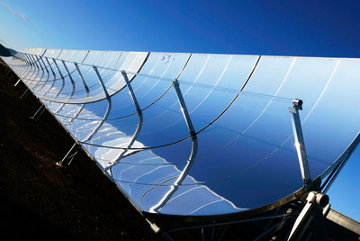Solar energy zones on public land proposed for six states including California

The Department of the Interior and the Department of Energy have targeted 21 million acres of public land as now available for right-of-way applications with over 677,000 acres designated as Solar Energy Zones (SEZ) and appropriate for solar power installations. SEZ land is chosen based on its high solar energy potential and fewest potential environmental conflicts.
There are currently 104 active solar power applications on public land which could generate a whopping 60 GW of power. By designating land as SEZ, the government hopes to speed the process by which developers can propose and build solar power plants. The SEZ's are in Arizona, California, Colorado, Nevada, New Mexico and Utah, with about 214,000 acres thought to be suitable for near-term development.
The government fast-tracked and approved eight utility-scale projects on public land this year in California and Nevada. They will generate 3.5 GW when completed. With this new initiative, many more such plants will be approved. The plan, which weighs in at a staggering 10,000 pages, is open for public comment for 90 days. In effect, the government is pre-approving land as suitable for solar so developers can have more confidence their applications will be accepted.
Putting solar power on arid, sun-baked land that is generally inaccessible to most makes sense. By having the power plants in remote areas, they will be "out of sight, out of mind" and the NIMBYs presumably will be mollified. Another bonus, unlike wind power, solar is silent. Most of the proposed solar power plants are solar thermal, which uses the sun's heat to power turbines, rather than photo-voltaic, which immediately converts the energy of the sun into power. A big advantage of solar thermal is that the heat can be stored, often in molten salt, to be used later to generate power when the sun isn't out. But, solar thermal does require water, which would indeed seem to be problematic in deserts. However, modern solar thermal design uses air cooling to convert the steam back to water, greatly reducing the amount of water used. Of course, such plants will use vastly less water than coal plants, which can also be sited on arid land in the West, and with no noxious emissions.
The American West has huge amounts of unused public land that is ideal for solar power. This plan identifies areas where solar can be done with as little environmental impact as possible. In ten years, the West could be generating massive amounts of electricity from such installations. Let's hope it happens.



